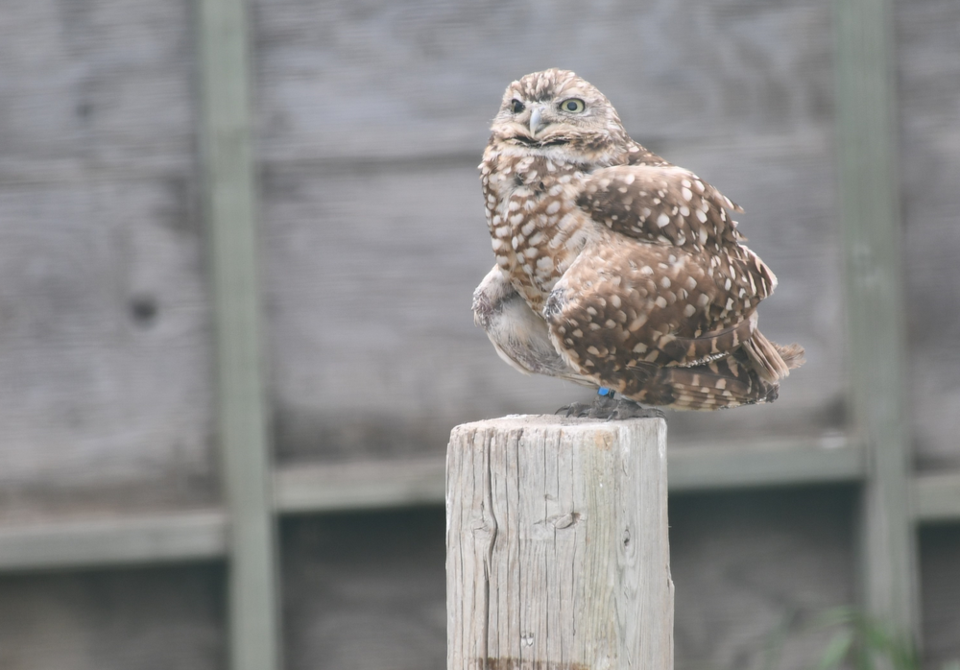For 24 years, the Saskatchewan Burrowing Owl Interpretive Centre (SBOIC) has hosted an adopt-an-owl program, giving residents the chance to learn more about these endangered birds of prey.
Adopting a burrowing owl — symbolically, not actually —makes a great gift for almost anyone, the centre’s website says. The organization appreciates people’s financial support since it costs about $400 per owl per year to feed them.
It costs $50 to adopt a burrowing owl for six months, $100 for one year and $175 for two years.
The adoption package includes a certificate with details about the owl, a picture, an extra photo to frame, a fact sheet on burrowing owls, two postcards, and a stuffed plush burrowing owl toy for one- and two-year subscriptions. There is also the “satisfaction of knowing that 100 per cent of your money goes to care for the owls.”
It is also possible to make a straight donation to the program. Either way, donors will receive a tax receipt.
The interpretive centre is located on the Exhibition Grounds on Thatcher Drive East.
The fact the adoption program has been running for 24 years — it operates year-round — proves that residents care about burrowing owls and the interpretive centre, said handler Lori Johnson.
“We do have some very loyal supporters who, year after year, they renew their adoptions. So, it tells you that there are some very great people out there who are willing to share a little bit with some of the other species of the landscape,” she remarked.
All the funds raised ensure that the centre can maintain its small flock of 11 burrowing owls and one short-eared owl, she continued. The latter animal — Shorty, as she’s known — was found abandoned in the family nest, along with her siblings. Conversation officers brought the owls to the centre, which raised them and found them homes.
However, the centre kept Shorty, and she now helps showcase the variety of raptor species in Saskatchewan.
Since the adoption is symbolic, multiple people can adopt one bird, said Johnson. This method has allowed many people to follow the birds through their life.
The normal lifespan of a burrowing owl is three to four years, although some can live for eight years.
The interpretive centre acquired most of its burrowing owls after hatching them at the venue or from other places that hatched them and needed a home for them, she continued. The centre also acquired some birds after they were injured and couldn’t be released back into the wild since they couldn’t care for themselves.
Some factors make burrowing owls an endangered species, Johnson said. These include habitat loss and disappearance of native prairie or grasslands; loss of other burrowing animals such as badgers and gophers; and use of pesticides and rodenticides.
There are currently no large-scale surveys underway in Canada to determine how many burrowing owls are alive in the wild, which means scientists must use their best guess, she remarked. Researchers believe that there are 500 to 800 pairs of owls in the wild across parts of southern Manitoba, Saskatchewan, Alberta, and British Columbia.
A female burrowing owl can lay between five and 12 eggs per year, added Johnson, although most will lay eight to nine.
Visit www.skburrowingowl.ca for more information.




